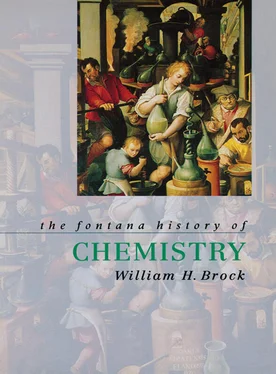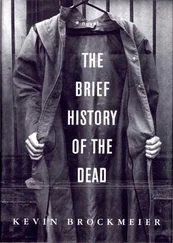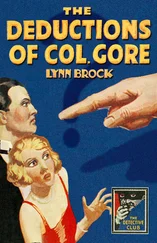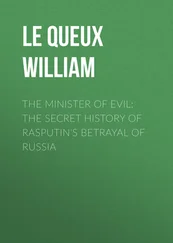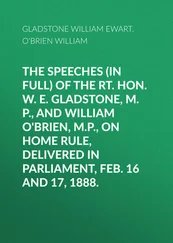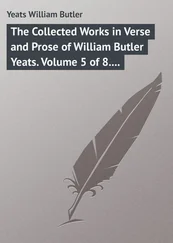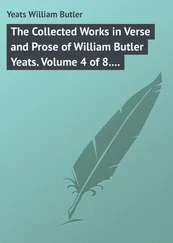Robert Boyle (1627–91), who was born in Ireland as the seventh son of the Earl of Cork, was educated at Eton and by means of a long continental tour from which he returned to England in 1644. In the 1650s he became associated with Samuel Hartlib and his circle of acquaintances, who sometimes referred to themselves as the ‘invisible college’. The Hartlibians were interested in exploiting chemistry both for its material usefulness in medicine and trade and for the better understanding of God and Nature. Since the group included the American alchemist George Starkey among its members, not surprisingly Boyle began to read extensively into the alchemical literature. Between 1655 and 1659 and from 1664 to 1668 Boyle lived in Oxford, where he became associated with the group of talented natural philosophers who were to form the Royal Society in 1661. Boyle was an extraordinarily devout man who, like Newton a generation later, wrote as much on theology as on natural philosophy. He paid for translations of the Bible into Malay, Turkish, Welsh and Irish, and left money in his will for the endowment of an annual series of sermons, to be preached in St Paul’s Cathedral, that would reconcile and demonstrate how science supported religion.
The generation before Boyle had seen a revival in the fortunes of the atomic theory of matter. Throughout the middle ages, as the text of Geber’s Summa perfectionis demonstrates, natural philosophers had been familiar with the Aristotelian doctrine of the minima naturalis , which they treated to all intents and purposes as ‘least chemical particles’. Lucretius’ poem, On the Nature of Things , had been rediscovered and printed in 1473. A century later, in 1575, Hero’s Pneumatica was published and disseminated an alternative non-Epicurean atomic theory in which the properties of bulk matter were explained by the presence of small vacua that were interspersed between the particles of a body. This theory, which allowed heat to be explained in terms of the agitation of particles, was exploited by, among others, Galileo, Bacon and Helmont in their search for an alternative to Aristotelianism. A century later, in 1660, the French philospher, Pierre Gassendi (1592–1655), advocated the Epicurean philosophy of atoms to replace Aristotelian physics. His work, Philosophiae Epicuri Syntagma , was a rambling summary of atomism, but its assertion of the vacuum provided an alternative to Descartes’ plenistic particle theory. Descartes’ three grades of matter, i.e. large terrestrial matter, more subtle or celestial matter that filled the interstices of the former, and still subtler particles that filled the final spaces, bore more than a passing resemblance to the elements of earth, air and fire, let alone Paracelsus’ principles of salt, mercury and sulphur. To those who have studied the matter, it is clear that Boyle was much indebted both to Gassendi and to his English disciple, Walter Charleton, whose Epicuro-Gassendo-Charletoniana (1654) had not only presented a coherent mechanical philosophy in terms of atoms or corpuscles, but placed it in an acceptable Christian context.
In 1661 Boyle published The Sceptical Chymist , a critique of peripatetic (Aristotelian), spagyric (Paracelsian and Helmontian) chemistry and the substantiation of physical and chemical properties into pre-existent substantive forms and qualities. Although designed as an argument in dialogue form between four interlocutors, Carneades (a sceptic), Themistius (an Aristotelian), Philoponus (a Paracelsian) and Eleutherius (neutral), Boyle’s rather verbose, digressive and rambling style makes it difficult for the modern reader to follow his argument. Much of the treatise becomes a monologue by Boyle’s spokesman, Carneades. Fortunately, there exists in manuscript an earlier, more straightforward, less literary, and hence more convincing, version of the essay, ‘Reflexions on the Experiments vulgarly alledged to evince the four Peripatetique Elements or the three Chymical Principles of Mixt Bodies’. Apart from one or two references to the later book, we shall follow the argument in this manuscript, which from internal evidence was written in 1658.
A typical defence of the four-element theory was to cite the familiar case of burning wood 1 :
The experiment commonly alledged for the common opinion of the four elements, is, that if a green stick be burned in the naked fire, there will first fly away a smoake, which argued AIRE, then will boyle out at the ends a certain liquor, which is supposed WATER, the FIRE dissolves itself by its own light, and that incombustible part it leaves at last, is nothing but the element of EARTH.
Boyle, following Helmont quite closely, raised a number of objections to this interpretation. In the first place, although four ‘elementary’ products could be extracted from wood, from other substances it was possible to extract more or fewer.
Out of some bodies, four elements cannot be extracted, as Gold, out of which not so much as any one of them hath been hitherto. The like may be said of Silver, calcined Talke, and divers other fixed bodies, which to reduce into four heterogeneal substances, is a taske that has hitherto proved too hard for Vulcan. Other bodies there be, that can be reduced into more ,… as the Bloud of men and other animals, which yield, when analyzed, flegme, spirit, oile, salt and earth.
Here Boyle seems to have stumbled upon a distinction between mineral and organic substances, but he did not develop this point. Instead, he objected to the assumption that the four products of wood were truly elements. A little further chemical manipulation suggested, indeed, that the products were complex.
As for the greene sticke, the fire dos not separate it into elements, but into mixed bodies, disguised into other shapes: the Flame seems to be but the sulphurous part of the body kindled; the water boyling out at the ends, is far from being elementary water, holding much of the salt and vertu of the concrete: and therefore the ebullient juice of several plants is by physitians found effectual against several distempers, in which simple water is altogether unavailable. The smoake is so far from being aire , that it is as yet a very mixt body, by distillation yielding an oile, which leaves an earthe behind it; that it abounds in salt, may appear by its aptness to fertilise land, and by its bitterness, and by its making the eyes water (which the smoake of common water will not doe) and beyond all dispute, by the pure salt that may be easily extracted from it, of which I lately made some, exceeding white, volatile and penetrant.
This criticism clearly shows how carefully Boyle had studied the products of the destructive distillation of wood – an experiment that used to be one of the introductory lessons in British secondary school chemistry syllabuses in the twentieth century.
Finally, Boyle turned his penetrating criticism to the method of fire analysis itself. Why was it, he asked, that if the conditions of fire analysis were slightly altered or a different method of analysis was used, the products of analysis were different? Thus, if a Guajacum log was burned in an open grate, ashes and soot resulted; but if it was distilled in a retort, ‘oile, spirit, vinegar, water and charcoale’ resulted. And whereas aqua fortis (concentrated nitric acid) separated silver and gold by dissolving the silver, fire would, on the contrary, fuse the two metals together. Moreover, the degree of fire (the temperature) could make the results of analysis vary enormously.
Thus lead with one degree of fire, will be turned into minium [lead oxide], and with another be vitrified, and in neither of these will suffer any separation of elements. And if it be lawful for an Aristotelian, to make ashes (which he mistakes for Earthe) passe for an element, why may not a Chymist upon the same principle, argue that glas is one of the elements of many bodies, because by only a further degree of fire, their ashes may be vitrified?
Читать дальше
